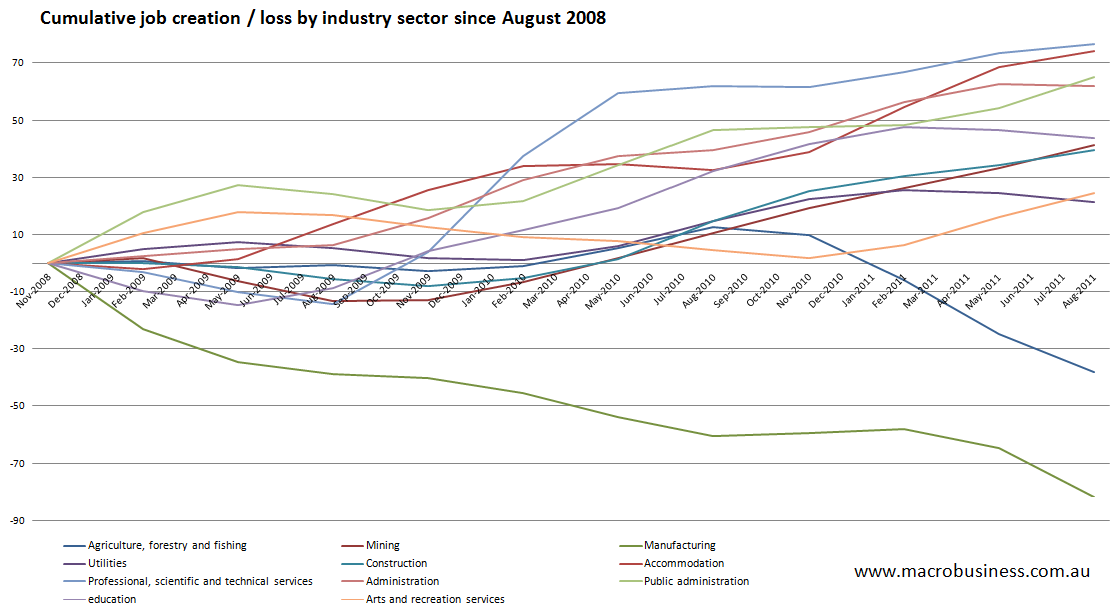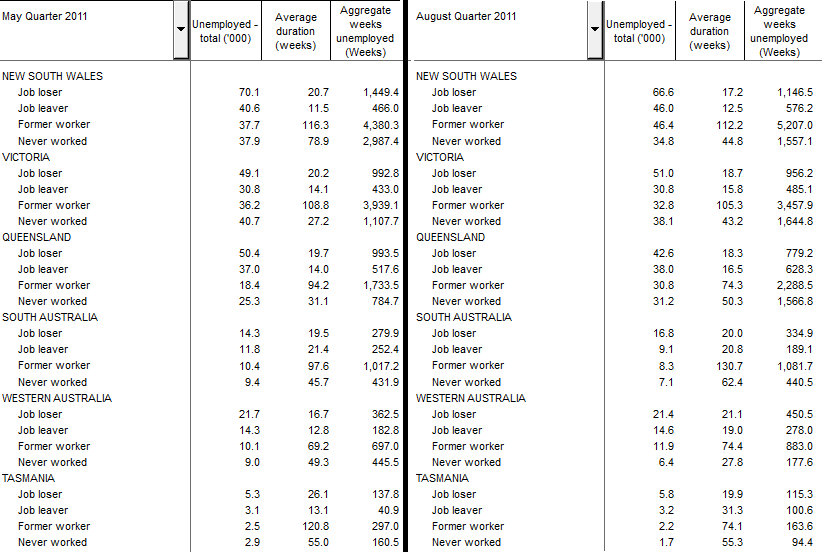The ABS released its detailed quarterly labour force survey data for August today. Digesting this data takes a little time and it needs to be interpreted alongside the monthly employment data, which has shown an uptick in unemployment in July and August.
Since August 2008 the following sectors of the economy have reduced their share of total employment.
- agriculture forestry and fishing
- manufacturing
- wholesale and retail trade
- transport and warehousing
- information media and telecoms
Those sectors increasing their share are
- mining
- professional, scientific and technical services
- utilities (electricity, gas, water and waste)
- accommodation and food services
- administrative and support services (after a great reduction in share between 2001 and 2008)
- arts and recreation services
The growing mining share of employment is the continuation of a trend that began back in 2001. This adjustment has led mining to double its share of total employment – from 0.9% to 2.0%.
The share of employment in construction is flat (since 2006), so it appears that slumping residential construction has not yet had a large net impact on total construction employment relative to other sectors. No doubt there are adjustments happening within the sector.
We can look at the raw employment numbers across each sector (below). In terms of absolute job numbers, manufacturing continues a long run downwards trend but is showing a distinct acceleration in diminishing share. Agriculture forestry and fishing has also had a very poor year in 2011 which is probably natural disaster related (I have heard reports of poor fishing on the reef since cyclone Yasi, and we all know about this year’s banana crop).

In all, the picture from today’s data is that the labour market is continuing to adjust in line with long term trends, alongside some recent sector specific changes. If we combine this data with the unemployment picture we could probably add the contracting sectors are being a little more efficient with their use of labour, reducing the workforce where they can, while expanding sectors are currently unble to employ workers (they might just be the wrong jigsaw puzzle piece), or workers themselves are not yet willing to change industry or reskill. We can’t know much more about the direction of unemployment from these numbers alone, without considering the broader macroeconomic backdrop.
The only other interesting snippet from today’s release is the duration of unemployment of people unemployed for different reasons.
The table below shows that May and August 2011 quarters and the duration of unemployment for worker who lost their previous jobs, who left their last job voluntarily, are returning to the workforce, or have never previously worked. There is not a lot in this data for in the way of short term signals, but over the long term is it interesting to see the reduction in time taken to change jobs.
